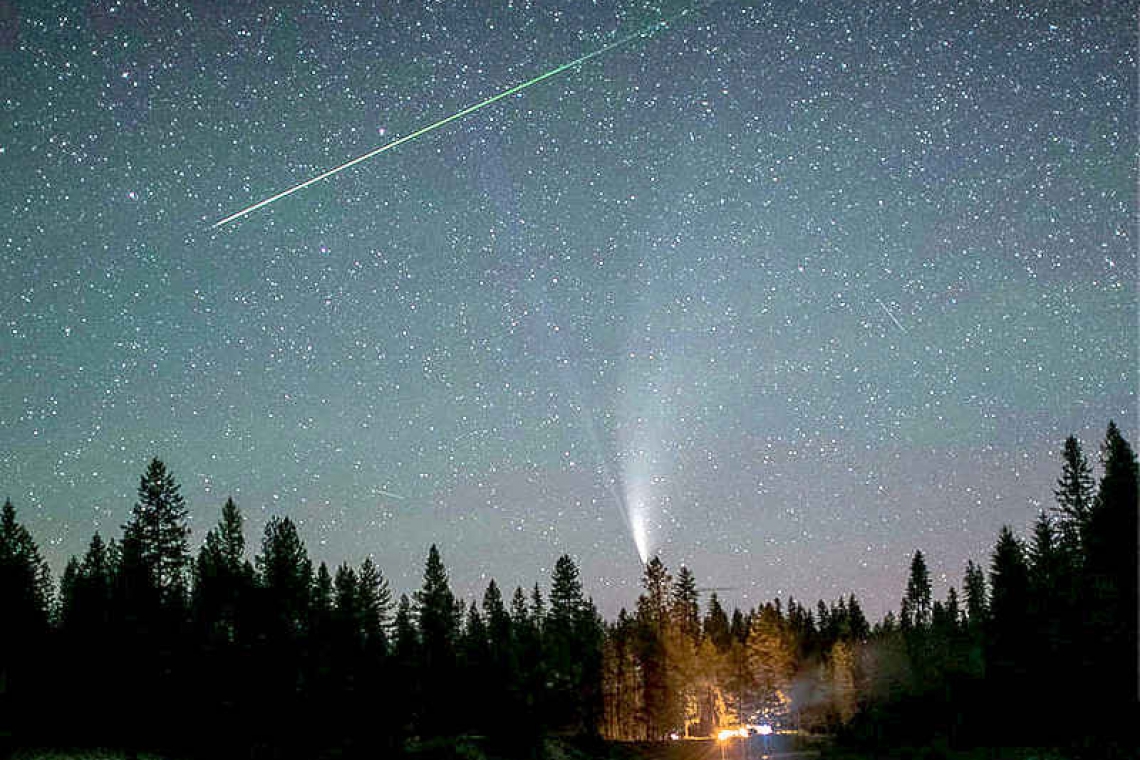Sun rises at 5:50am
Sun sets at 6:46pm
Lunar phase: second quarter, nearing full moon
Moon sets at 3:45am, Saturday
Moon rises at 5:23pm, Saturday
Ongoing event: Meteor Showers stretching from now to August 10.
This weekend, if the tropical clouds give us a break, we should be in night sky heaven. We have a lot going on to observe, or at least try to observe.
There is still a comet visible, Comet Neowise, and those seeing it are very impressed – so far, I haven't been too lucky (sad face). One reader from Point Blanche wrote in to share a link to where we may see it in our skies. I will share an image that shows where to find the comet during its late July journey across the sky. As we are entering August, perhaps you can just extrapolate the path (or extend it) but realize that it’s becoming dimmer over time. Best bet is after sunset, look north-northwest. Binoculars or telescopes may assist your efforts. Let me know if you have any success!
Additionally, we have the overlapping of two separate meteor showers: the rather faint Delta Aquarid meteor shower and the always impressive Perseid Meteor Shower. We discussed whys and wherefores of these two light shows last weekend, so re-read it if you want the details. Remember that meteor gazing is NOT helped by binoculars or other vision aids. Just look up, get comfy, and pray the clouds abate!
Also this weekend, we will have the bright, nearly-full moon shining down on us. The moon is full Sunday and Monday nights, this month it’s given the name the Full Sturgeon Moon, presumably a good moon to fish by in the lakes of North America.
The location of the moon right now can be used to help you identify the planets Jupiter and Saturn. All around the world this weekend, these two planets will be clearly visible beneath the moon, starting at nightfall. Although the glare of the almost-full waxing gibbous moon will wash out many stars from the black background of the night, Jupiter and Saturn should be bright enough to withstand its effects.
Jupiter is by far the brighter of these two worlds, but even so, Saturn is brilliantly bright. The trio of moon Jupiter and Saturn should be quite breath-taking, let's hope we have skies not dominated by clouds so we can enjoy this celestial show. These next few days, these three worlds – the moon, Jupiter and Saturn – climb up high around midnight, and then set beneath the southwest horizon before the onset of dawn. Although the moon appears to be close to Jupiter and Saturn on the sky’s dome, you are smart enough to know that the moon and these planets don’t come close together in actual space.
Thank you for keeping up with the Night Sky articles. If you are out later on in the week, each star rises about four minutes earlier each day than written here, and the moon rises 50 minutes later. Night Sky is researched and compiled by Lisa Davis-Burnett. Earthsky.org is a key resource for information and images. Questions or comments? Email This email address is being protected from spambots. You need JavaScript enabled to view it.







